We were driving around the Val d’Orcia in Tuscany, pausing to watch a farmer on an antique tractor tilling the field, when my husband remarked that there was something ‘wrong’ with the landscape.
“The fields and the hills, they just don’t ‘look right”, he said and later that day, on a tour at the famous La Foce garden, we learnt that the sun baked, eroded clay hills had been blasted with dynamite and levelled to create the fields.
Since then I’ve revisited the garden after reading books by the garden’s creator, Iris Origo, an Irish-American heiress who bought the then rundown 3,500-acre estate southeast of Siena with her Italian Marchese husband Antonio.
While the garden is one of the most important and best maintained 20th-century gardens in Italy, it is the combination of dramatic war and relatable domestic history, the beautiful garden and spectacular view that makes it one of my favourites.
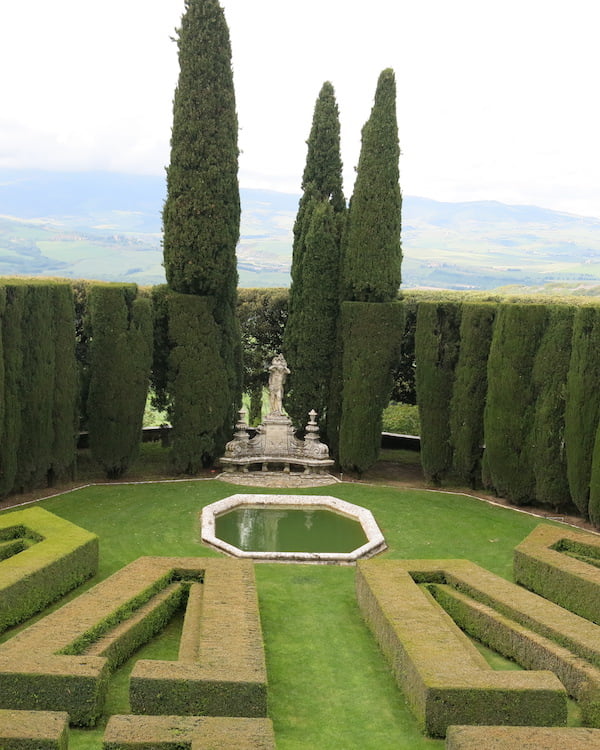
La Foce. Image, Deryn Thorpe
Iris Origo described the landscape in 1923 when she arrived as a newlywed 22 year-old as ‘lunar, pale and inhuman’. The couple bought the dilapidated 15th-century villa and land in 1925 and spent the next 15 years improving the degraded farms with a planned program of intensive cultivation.
They prepared the difficult terrain for modern agriculture (using dynamite), establishing more than fifty tenant farms of about a hundred acres grouped around the central farm where the Origos lived.
Family friend, English society architect Cecil Pinsent, drew the plans for Iris’s garden and also expanded the house to take in views over the valley and Amiata mountains and styled it to create harmony between the building, gardens and woodland.
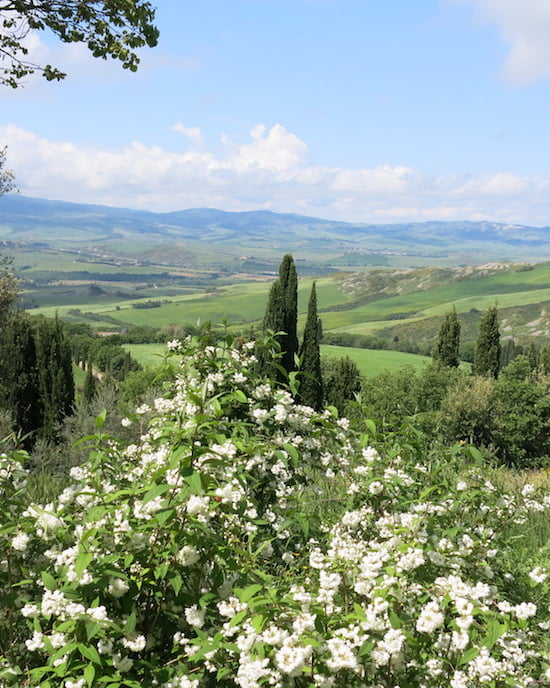
La Foce garden. Image Deryn Thorpe
The Origo’s management of the area brought prosperity and cultural and social changes to one of Italy’s most impoverished rural areas and her experience is revealed in her autobiographies Images and Shadows and War in Val d’Orcia.
The last book describes the delicate and dangerous game the couple played in 1943 and 1944 when the Germans occupied Tuscany and Allied forces were inching their way up from the south.
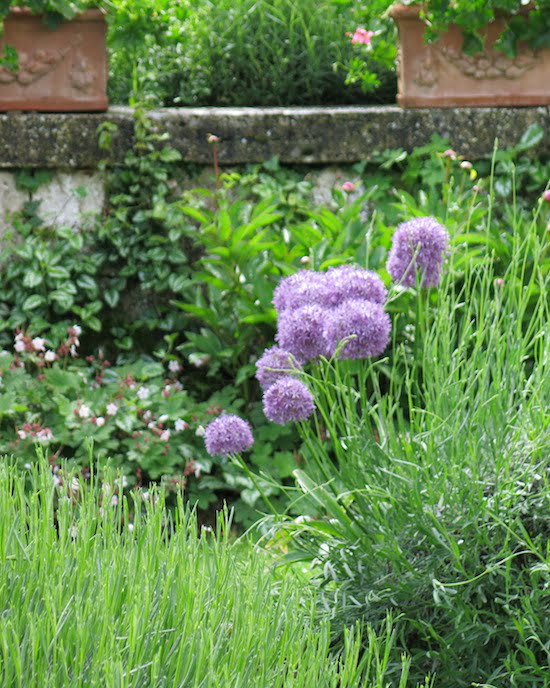
Alliums in the flower beds. Image Deryn Thorpe
Antonio appeared to support the ruling fascists while the couple helped a steady stream of downed Allied pilots, Jewish refugees and escaped POWs hide in the surrounding woods and barns.
War orphans and refugee children took shelter on the estate before fighting forced Iris, her daughters and the 30 children to flee.
However, I digress, this is a gardening article – but they did get to return once the front moved north! You’ll just have to read the books or come on my garden tour to La Foce next year to learn more!
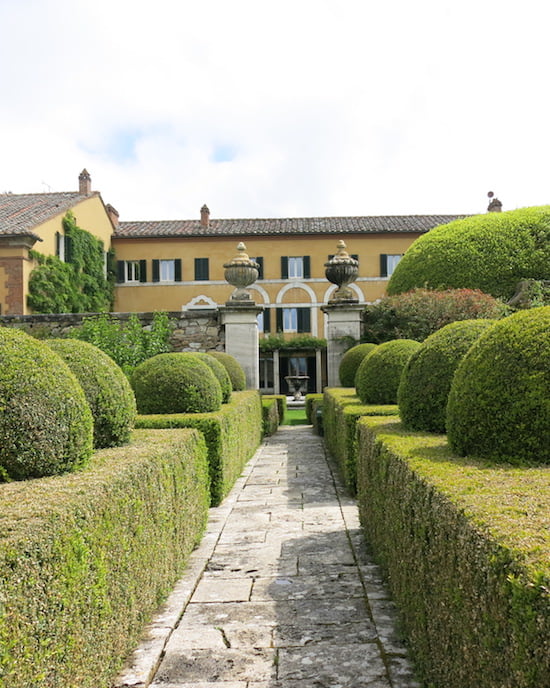
La Foce with its order and symmetry. Image Deryn Thorpe
Iris was passionate about the order and symmetry of Florentine gardens, expanding her garden between 1925 and 1939.
Near the house it has a formal Italian design and is divided into geometrical ‘rooms’. One has formal hedges with lemon trees in terracotta pots and the other flower beds with a double edging of box and a travertine fountain.
It’s not easy to create gardens on sloping sites and this design uses techniques that ‘trick the eye’.
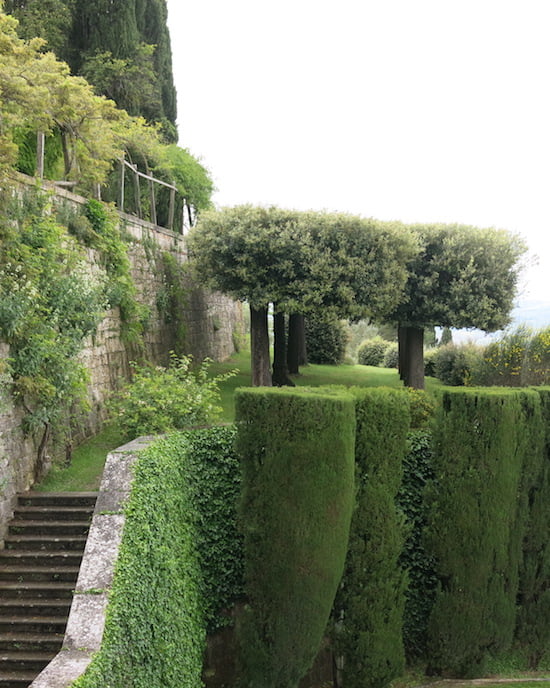
La Foce with its clever design. Image Deryn Thorpe
Travertine stairs lead to the rose garden, a cottage style garden and a wisteria-covered pergola supported by stone columns is bordered by a lavender hedge.
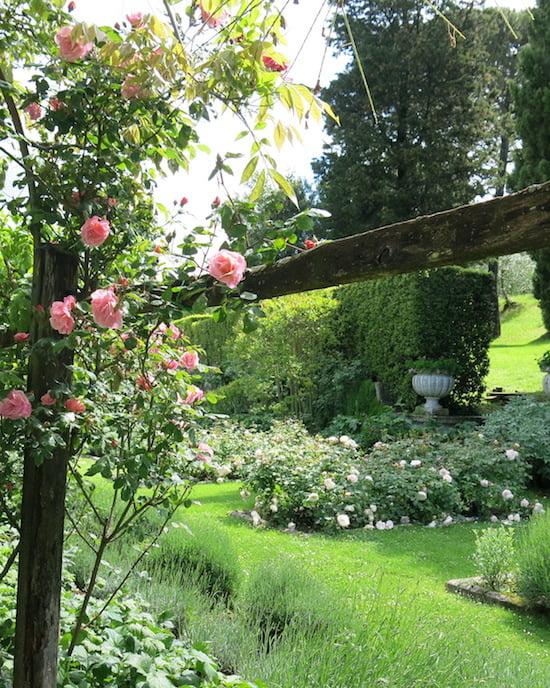
La Foce. Image Deryn Thorpe
Gentle informal terraces climb up the hill, where cherry trees, pines and cypresses grow among wild broom, thyme and rosemary. The effect is both formal and romantic and looks totally balanced and magnificent.
If you’ve ever seen Italy tourist catalogues you’ll know the famous Tuscan view of a zig zag hill road punctuated with cypress trees. Well that view was created by the family to make a picturesque outlook from the garden!

Zig Zag hill road. Image Deryn Thorpe
A long cypress avenue leads to a 17th-century stone statue and through the wood a path joins the garden, the family chapel and cemetery where the couple are buried.
My words and photographs just don’t do the garden justice – take my advice, go to Italy, eat fabulous food, drink delicious wines and see it for yourself!
Deryn Thorpe is taking a tour with ASA Cultural Tours to see northern and central Italy’s finest gardens, including La Foce, in May 2019 with artist David Henderson. For an itinerary visit Deryn Thorpe’s website
